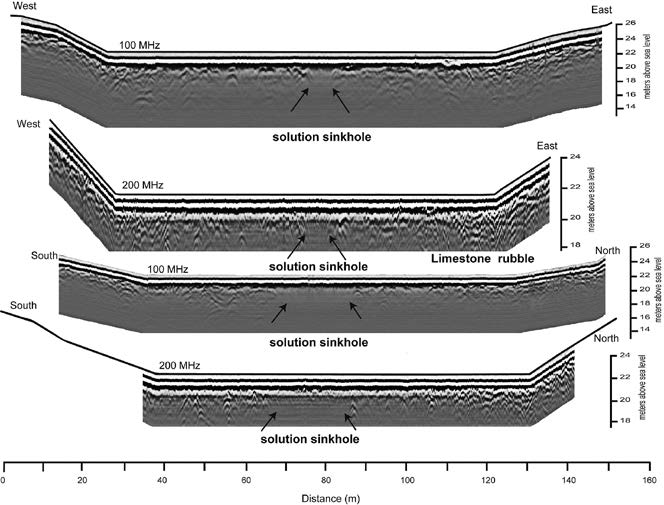Investigating Ancient Maya Agricultural Adaptation Through Ground Penetrating Radar (GPR) Analysis of Karst Terrain, Northern Yucatán, Mexico
DOI:
https://doi.org/10.3986/ac.v39i1.118Povzetek
Landscape adaptation on the Northern Yucatán Peninsula, Mexico, is particularly difficult, as soils are thin and the terrain is devoid of any surface water other than the occasional sinkhole (cenote) that connects directly to the groundwater system. Despite this, ancient Maya cities, including Xuenkal, emerged and thrived, likely because of their proximity to natural sinkholes. In the case of Xuenkal, these sinkholes, known locally as rejolladas, have bases above the local water table and, as such, do not provide direct access to the underlying water, but they provide closer access. Recognizing that the presence of rejolladas was likely important to the ancient Maya the purpose of this study is to characterize the rejolladas in terms of their subsurface characteristics, specifically bedrock configuration and soil. Ground penetrating radar analysis, as well as the results of a test pit excavation, confirm the presence of deep soils in the rejollada bases. It seems that the smaller deeper rejolladas have the thickest soils and sediment. The ancient city of Xuenkal is constructed amidst a particularly dense cluster of rejolladas which may have contributed to its location. Rejolladas, containing significantly thicker soils than the surrounding karst surface, and the ability to sustain dense healthy vegetation would have been particularly desirable for the Maya to capitalize on.
Prenosi

Prenosi
Objavljeno
Kako citirati
Številka
Rubrike
Licenca
Avtorji jamčijo, da je delo njihova avtorska stvaritev, da v njem niso kršene avtorske pravice tretjih oseb ali kake druge pravice. V primeru zahtevkov tretjih oseb se avtorji zavezujejo, da bodo varovali interese založnika ter da bodo povrnili morebitno škodo.
Podrobneje v rubriki: Prispevki




